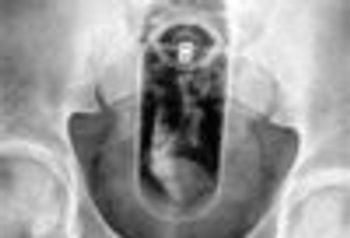
This is a case of non-abuse: the foreign body was an attempt at self-stimulation.
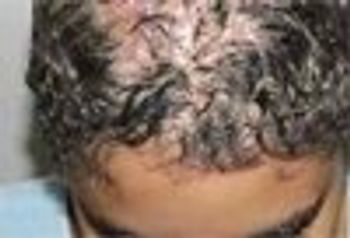
When it comes to tinea capitis, there’s a downside to loving your pet. Dermatologist Ted Rosen takes you through the differential and details effective diagnostic strategies.

Head lice: Dr. Ted Rosen eschews nit picking and updates you on currently effective therapies.

Serum uric acid level may be a predictor of metabolic syndrome in adolescents, a new study reports. The findings offer clinicians another diagnostic tool for identifying children who are at a higher risk for developing cardiovascular disease and type 2 diabetes mellitus.

Children aged as young as 7 years report that they have engaged in nonsuicidal self-injury, hurting themselves without the intent to die. Who is most at risk?

Increased intake of dietary fiber is associated with less visceral fat and lower levels of inflammatory markers in adolescents, a new study found. Getting adolescents to eat more fiber might also lower the long-term risks associated with cardiovascular disease and diabetes.

Negative results on newborn screening do not rule out classic congenital adrenal hyperplasia (CAH) and can delay the diagnosis, according to a new report. The study showed that over a 12-year period, 22% of babies diagnosed with CAH were not identified by newborn screening.

Auditors found that there is room for improvement in numerous areas of the Centers for Disease Control and Prevention’s Vaccines for Children program. What areas failed to make the grade?

Blisters are relatively common in a busy office or pediatric ED.Child abuse should be included in the differential diagnosis of blisters, along with immersion burn, blistering distal dactylitis, and epidermolysis bullosa simplex.
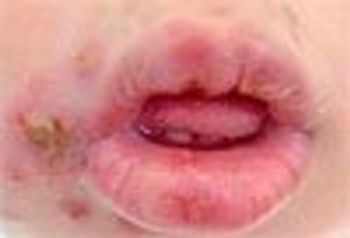
Read here for more details...

Molluscum contagiosum: they’re embarrassing and contagious-- and treatable. Details for a successful outcome here.

Through our sister site, Physicians Practice, we are able to provide you with news and information you can use to help run your private medical practice from experts covering everything from health IT innovations to small rewards for your office staff. But now we want to hear from our other experts - you. Take our brief editorial survey to tell us what you want to read in the coming year both in print and online. We've provided some topics, you just tell us how interested you are in these ideas. By completing the survey, you'll have the chance to enter to win a $500 Visa gift card. The survey will run through July 27th. No purchase is necessary. Void where prohibited. Visa is not a particular in or sponsor of this Sweepstakes. See official rules for full details.
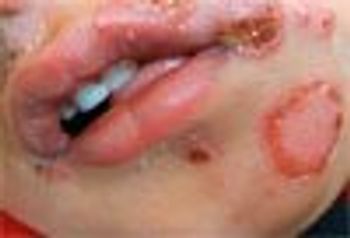
Impetigo has lots of mimics. Ted Rosen, MD, describes the diagnostic contenders and the treatments that can cure the infection in an era of increasing mupirocin resistance.

Warts: what works, what doesn’t? From duct tape to intralesional bleomycin, here are the fact facts you need to help your patient.


Wearing progressive-addition lenses (PALs)—otherwise known as no-line bifocals—seems to slow the progression of nearsightedness in elementary school-aged children, but do they do so well enough to make progressive lenses the clinical standard for children with myopia?

Teenagers and young adults with acute lymphoblastic leukemia (ALL) are more likely to relapse and less likely to survive than younger children with the disease, according to a preliminary study. What is responsible for the lower survival rates?

The prevalence of both type 1 and type 2 diabetes has increased substantially among American children over the past decade, new research says.

Findings of a new study suggest that the current schedule of acellular pertussis vaccination is not sufficient to prevent outbreaks of the disease. The rate of vaccine failure rose as the interval from the last dose increased. Should earlier or more frequent booster doses be recommended?

Some newborns are testing falsely positive for marijuana exposure, which can lead to erroneous allegations of child abuse, researchers from the University of North Carolina, Chapel Hill, report. What commonly used products can skew test results like this?

Bath salts and herbal incense-synthetic legal intoxicating drugs (so-called SLIDs)-have potentially serious adverse effects-including acute psychosis, delirium, violent behavior, seizures, and cardiovascular emergencies.

Assessing bone age should be a standard of care for children with Crohn disease, new research recommends. How would patients benefit?

The US Food and Drug Administration (FDA) has released a new database of pediatric medications to assist health care professionals find information on medical products studied in children. How will this resource clarify the prescribing of medicines?

Research has shown that children aged 7 to 9 years who exercise daily can increase bone mass and bone size, but does increased activity place these children at heightened risk for bone fracture?

Friendships strongly influence physical activity levels among children even as young as 5 to 12 years, a new study reports. The findings may point to new ways of fighting obesity. More >>

Parents? smoking worsens urinary problems in kids
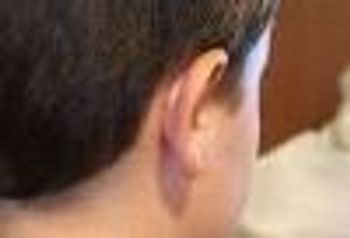
Pain from ear infections can be reduced at home and during plane travel using ibuprofen and home remedies: cold water, warm compresses, and paper cups

Young female athletes are vulnerable to concussions and other sports-related head and neck injuries. Repeated insult may lead to permanent neurologic deficit.

An emerging dyslipidemia : Assessing future CV risk Postpartum depression : Why the pediatrician should screen new moms Adolescent anxiety disorders : Which behaviors need treatment? Dermcase : Newborn baby girl with papules, plaques on her scalp and face Puzzler : Teenager with abdominal pain and ascites

Investigators examined the effect of state and school-district policies on the prevalence of 2 separate physical activity opportunities - physical education and recess - in a nationally representative sample of US public schools.